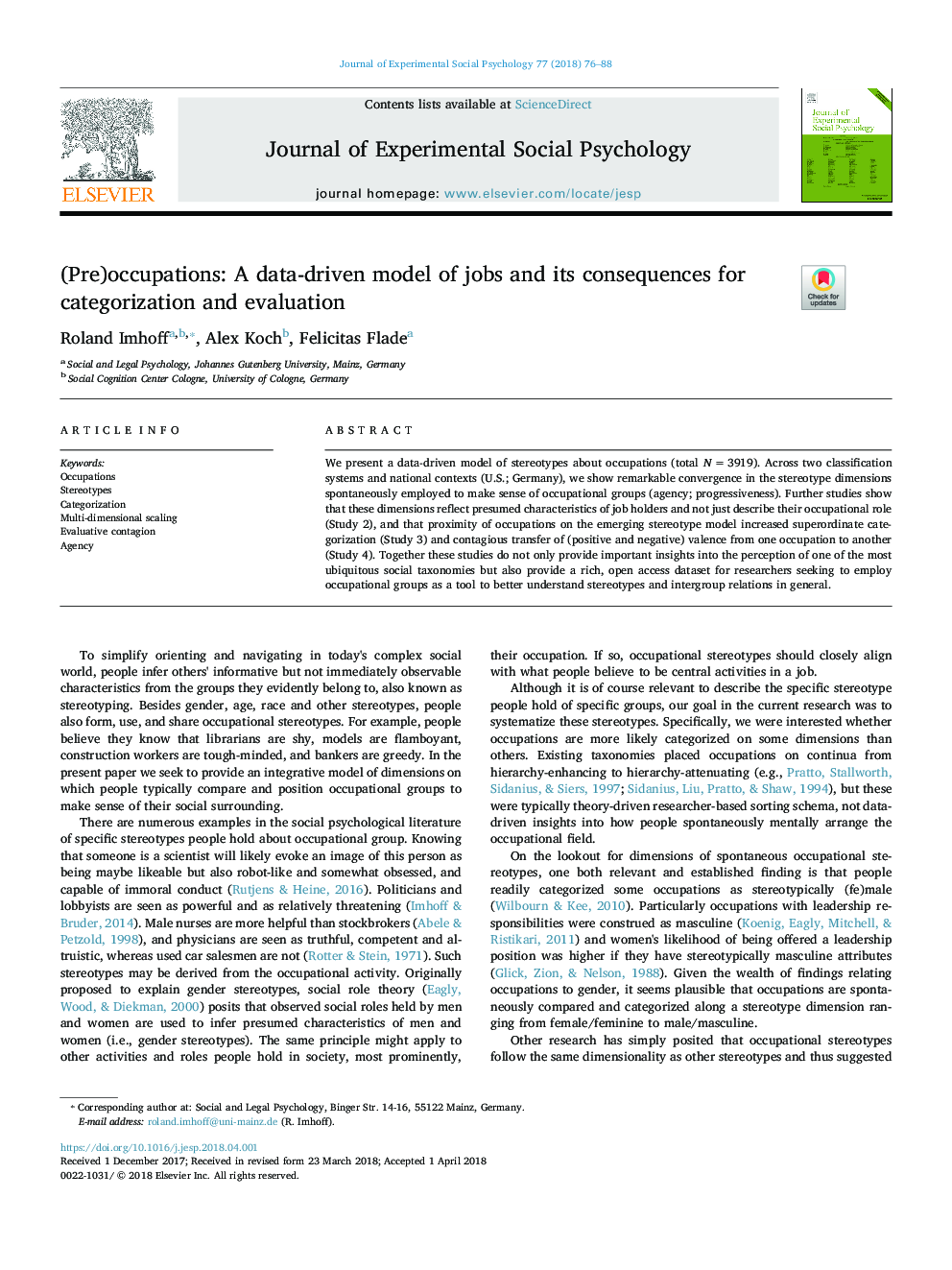| Article ID | Journal | Published Year | Pages | File Type |
|---|---|---|---|---|
| 7324033 | Journal of Experimental Social Psychology | 2018 | 13 Pages |
Abstract
We present a data-driven model of stereotypes about occupations (total Nâ¯=â¯3919). Across two classification systems and national contexts (U.S.; Germany), we show remarkable convergence in the stereotype dimensions spontaneously employed to make sense of occupational groups (agency; progressiveness). Further studies show that these dimensions reflect presumed characteristics of job holders and not just describe their occupational role (Study 2), and that proximity of occupations on the emerging stereotype model increased superordinate categorization (Study 3) and contagious transfer of (positive and negative) valence from one occupation to another (Study 4). Together these studies do not only provide important insights into the perception of one of the most ubiquitous social taxonomies but also provide a rich, open access dataset for researchers seeking to employ occupational groups as a tool to better understand stereotypes and intergroup relations in general.
Related Topics
Life Sciences
Neuroscience
Behavioral Neuroscience
Authors
Roland Imhoff, Alex Koch, Felicitas Flade,
